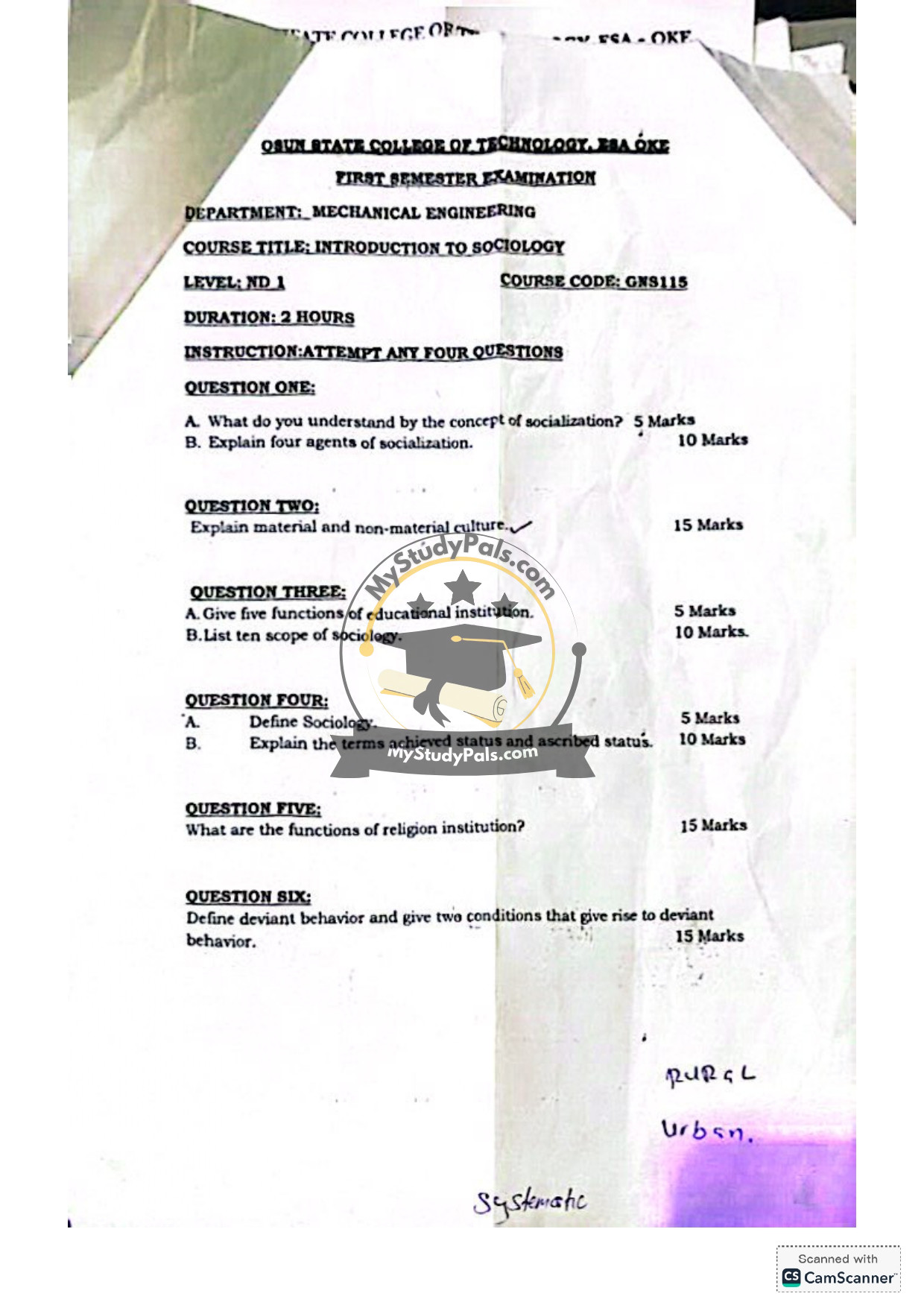ANWSER
Question 1:
A. Socialization
Socialization is the lifelong process through which individuals learn and internalize the values, norms, customs, and behaviors of their society, enabling them to function effectively within their social environment.
B. Four Agents of Socialization
1. Family: Primary agent that teaches basic norms, language, and emotional bonds.
2. School: Introduces formal education, discipline, and social roles (e.g., teamwork, hierarchy).
3. Peer Groups: Influence identity formation and social acceptance through shared interests.
4. Media: Shapes perceptions, attitudes, and cultural trends via digital and traditional platforms.
—
Question 2:
Material and Non-Material Culture
– Material Culture: Physical objects created by a society (e.g., tools, clothing, architecture, technology). These reflect practical needs and technological advancements.
– Non-Material Culture: Abstract ideas and societal constructs (e.g., beliefs, values, language, rituals). These guide behavior and social cohesion.
Example: A smartphone (material) vs. the etiquette of texting (non-material).
—
Question 3:
A. Five Functions of Educational Institutions
1. Socialization (teaching societal norms).
2. Cultural transmission (passing knowledge across generations).
3. Social integration (uniting diverse groups).
4. Social placement (tracking students into roles via merit).
5. Promoting innovation (research and critical thinking).
B. Ten Scope of Sociology
1. Social institutions (family, education).
2. Social stratification (class, caste).
3. Culture and norms.
4. Deviance and crime.
5. Social change and development.
6. Religion and belief systems.
7. Political sociology.
8. Economic systems.
9. Urbanization and rural studies.
10. Health and environment.
—
Question 4:
A. Sociology
Sociology is the systematic study of human society, social interactions, institutions, and structures, focusing on patterns, relationships, and collective behavior.
B. Achieved Status vs. Ascribed Status
– Achieved Status: Earned through individual effort (e.g., doctor, spouse).
– Ascribed Status: Assigned at birth or involuntarily (e.g., race, gender, hereditary title).
—
Question 5:
Functions of Religious Institutions
1. Social Cohesion: Unites followers through shared beliefs and rituals.
2. Meaning and Purpose: Offers explanations for existential questions.
3. Social Control: Reinforces moral guidelines and laws.
4. Emotional Comfort: Provides solace during crises.
5. Charity and Welfare: Promotes altruism through community support.
—
Question 6:
Deviant Behavior
Deviant behavior refers to actions that violate widely accepted societal norms.
Two Conditions Leading to Deviance
1. Social Strain: When societal goals (e.g., wealth) are unattainable through legitimate means (Merton’s Strain Theory).
2. Weak Socialization: Inadequate transmission of norms (e.g., dysfunctional family or education systems).
—


